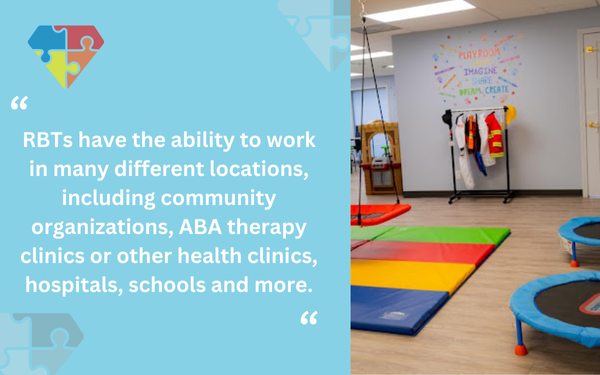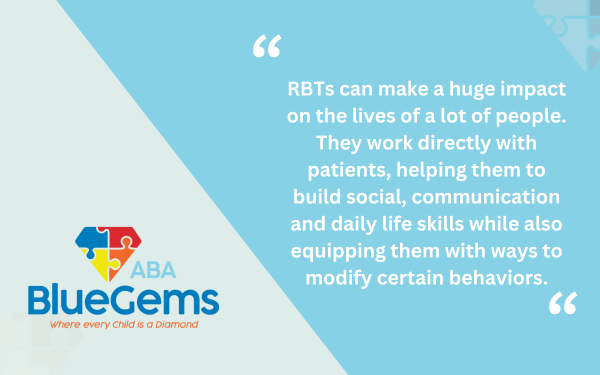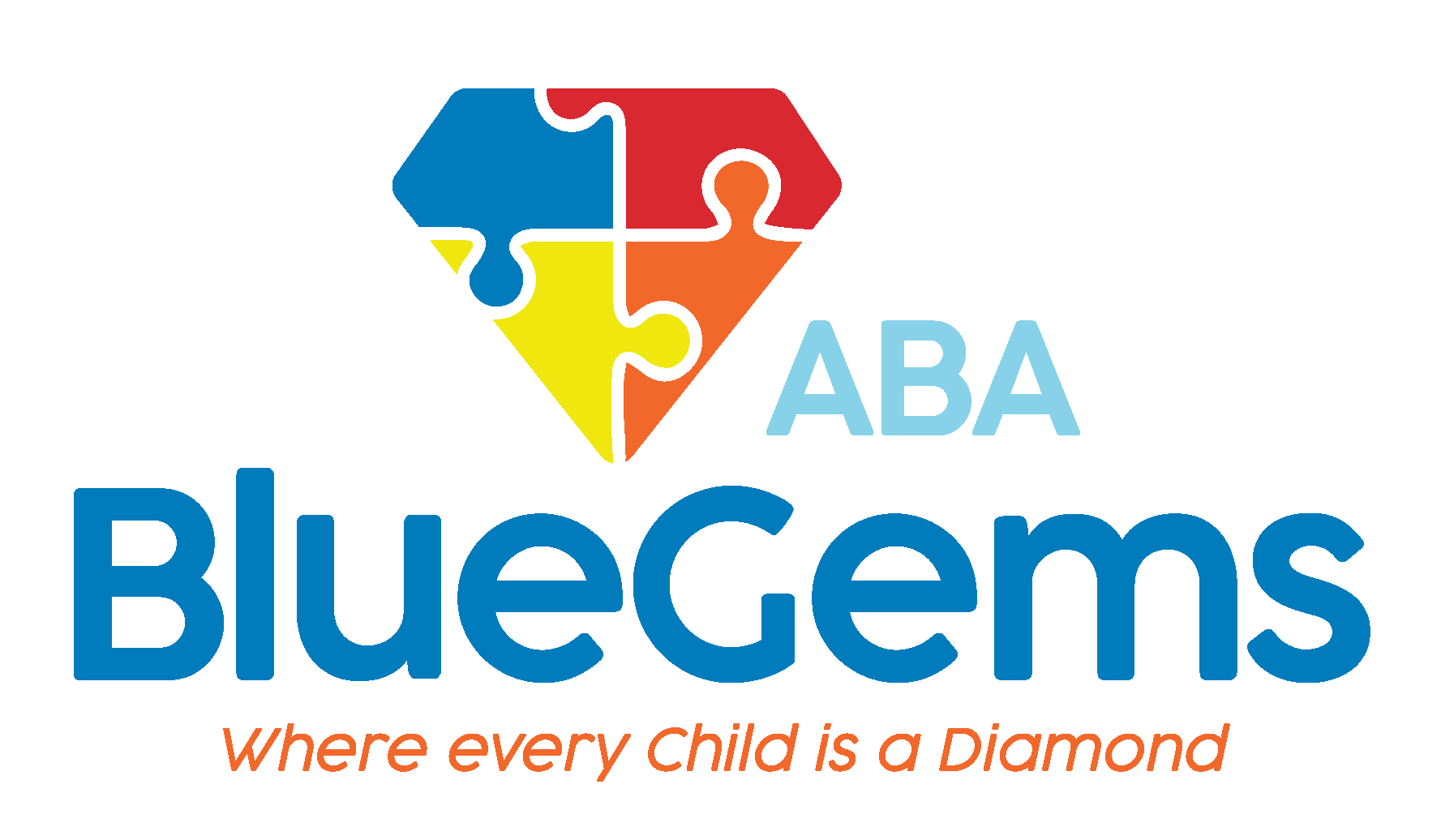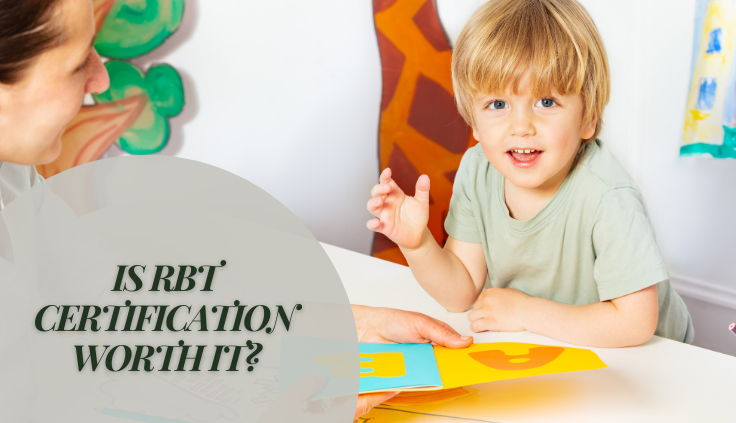¿Merece la pena la certificación RBT?
El número de niños diagnosticados de trastorno del espectro autista (TEA) en Estados Unidos y en todo el mundo aumenta cada año. Aunque hay muchas razones diferentes por las que la tasa de prevalencia de TEA está aumentando, el hecho es que se necesitan más profesionales capacitados para ayudar a apoyar a estos niños a través del análisis conductual aplicado (terapia ABA) y otras opciones de tratamiento.
Si le apasiona ayudar a los niños con autismo a crecer y tener éxito, y cree de todo corazón en el poder de los principios de la terapia ABA, debería plantearse trabajar directamente en este campo.
Hay muchas formas de hacerlo, pero la más común es convertirse en Técnico registrado en comportamiento (RBT). Para ello se necesita formación, cursos específicos y aprobar un examen, por lo que puede que te preguntes si merece la pena tanto trabajo.
A continuación explicaremos por qué Certificación RBT vale la pena, así como lo que implica convertirse en un RBT.
Índice
¿Cómo es trabajar como RBT?
Una de las grandes ventajas de la certificación RBT es que no estará limitado a trabajar en un puesto específico. Los RBTs tienen la capacidad de trabajar en muchos lugares diferentes, incluyendo organizaciones comunitarias, clínicas de terapia ABA u otras clínicas de salud, hospitales, escuelas y más.

Esta es una de las mayores ventajas de la certificación RBT. Mientras que todos los RBT aprenderán las mismas habilidades y principios, y cómo aplicarlos en escenarios del mundo real, hay muchas maneras diferentes en las que puede contribuir al campo y ayudar a los niños con TEA que están en necesidad.
Por eso es difícil describir exactamente lo que es trabajar como RBT - ya que el día a día puede ser muy variado en función de las distintas opciones disponibles.
Lo que la certificación RBT hace es darle muchas opciones para la forma en que desea trabajar en el campo de la terapia ABA específicamente, o campos relacionados con el análisis de la conducta. También le da una ventaja sobre otros posibles candidatos que no tienen la certificación, y abre posibilidades para el crecimiento profesional también.
¿En qué consiste la certificación RBT?
Para convertirse en un RBT certificado, primero debe cumplir una serie de requisitos.
Los requisitos previos incluyen tener un diploma de secundaria o equivalente y pasar una verificación de antecedentes.
También debe completar 40 horas de cursos de certificación en un proveedor certificado. Estas clases pueden ser presenciales o en línea, dependiendo del proveedor que elijas.
A continuación, deberá realizar una evaluación de la competencia en RBT, administrada por un BCBA. En ella se evaluará su capacidad para aplicar los conocimientos adquiridos en el aula a situaciones reales.
Por último, debe aprobar un examen oficial de certificación RBT, que es la parte escrita de la prueba.
Por supuesto, la certificación RBT implica un compromiso económico y de tiempo.
Desde un punto de vista económico, la certificación RBT puede costar entre $170 y $650, lo que incluye el programa de formación RBT, la tasa de examen de certificación y la tasa de comprobación de antecedentes.
Desde el punto de vista temporal, te llevará entre 40 y 60 horas en total completar todos los pasos necesarios. Sin embargo, estas horas pueden alargarse en función de la rapidez con la que quieras realizar el curso, así como de la disponibilidad para realizar la evaluación de competencias y el examen.
¿Merece la pena la certificación RBT?
Aunque sin duda debe sopesar los compromisos financieros y de tiempo necesarios para convertirse en un RBT, es un proceso que vale la pena para muchas personas.
Los RBT pueden tener un gran impacto en la vida de muchas personas. Trabajan directamente con los pacientes, ayudándoles a desarrollar habilidades sociales, comunicativas y de la vida diaria, al tiempo que les dotan de medios para modificar determinados comportamientos.

Esto puede mejorar enormemente la calidad de vida del niño, así como sus perspectivas de vivir de forma independiente en el futuro. A su vez, esto ayuda a aliviar parte de la carga de los padres, cuidadores y otros miembros de la familia, y les ayuda a crecer a ellos también.
Más allá de la satisfacción que se obtiene ayudando a niños con TEA y a sus familias, ser RBT también puede ser una carrera gratificante desde el punto de vista económico. En salario medio de un RBT en Estados Unidos se estima en $56.000 anuales.
No sólo eso, sino que con el tiempo también podrías decidir que quieres convertirte en un Analista del comportamiento certificado por la Junta (BCBA) - que requiere una formación más amplia y un trabajo de campo supervisado, con un salario medio superior a $100.000.
Conviértete en RBT de Blue Gems ABA y devuelve a la sociedad lo que ésta te ha dado.
Hay muchas maneras de ayudar a los niños con TEA a desarrollar las habilidades sociales, comunicativas y cotidianas que necesitan para triunfar en la vida. Ser RBT es una de las formas más gratificantes de hacerlo.
En Blue Gems ABAContamos con un equipo de RBT y BCBA certificados que administran terapia ABA individualizada a niños con espectro autista. Elaboramos todos nuestros planes de tratamiento para abordar específicamente las fortalezas y desafíos únicos de cada uno de nuestros pacientes.
Para más información Contacto hoy.










